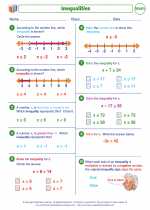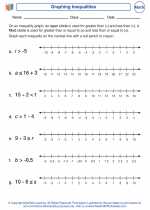Order of Symmetry
The order of symmetry of a geometric shape is the number of times that the shape can be rotated or flipped so that it looks exactly the same as the original. In other words, it is the number of distinct positions in which a figure can be placed so that it looks the same in each position.
Examples of Shapes with Different Orders of Symmetry:
1. A square has an order of symmetry of 4 because it can be rotated by 90, 180, or 270 degrees to look the same as the original position.
2. A triangle has an order of symmetry of 3 because it can be rotated by 120 degrees to look the same as the original position.
3. A circle has an infinite order of symmetry because it can be rotated by any angle and still look the same as the original position.
How to Find the Order of Symmetry:
1. For a shape with rotational symmetry, count the number of distinct positions in which the shape looks the same after rotating it.
2. For a shape with reflective symmetry, count the number of distinct lines of reflection that can be drawn so that the shape looks the same when reflected over each line.
Study Guide:
To study the order of symmetry, follow these steps:
- Identify the geometric shape you are analyzing.
- Determine if the shape has rotational symmetry, reflective symmetry, or both.
- If the shape has rotational symmetry, find the number of distinct positions in which the shape looks the same after rotating it.
- If the shape has reflective symmetry, find the number of distinct lines of reflection that can be drawn so that the shape looks the same when reflected over each line.
- Practice identifying the order of symmetry for different shapes using visual examples and by performing rotations and reflections.
Understanding the order of symmetry is important in geometry and can help in identifying and analyzing the properties of various geometric shapes.
.◂Math Worksheets and Study Guides Seventh Grade. Equations and Inequalities

 Worksheet/Answer key
Worksheet/Answer key
 Worksheet/Answer key
Worksheet/Answer key
 Worksheet/Answer key
Worksheet/Answer key
 Worksheet/Answer key
Worksheet/Answer key
 Worksheet/Answer key
Worksheet/Answer key
 Worksheet/Answer key
Worksheet/Answer key
